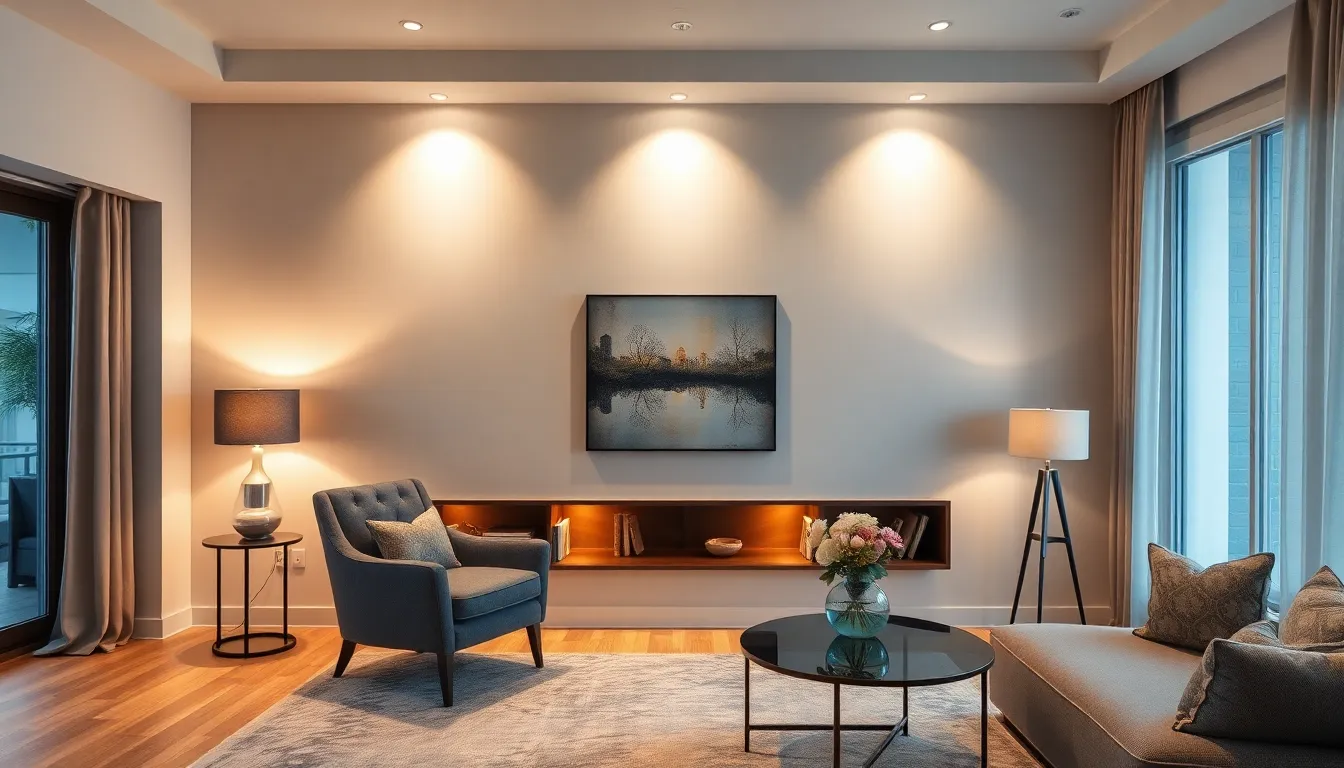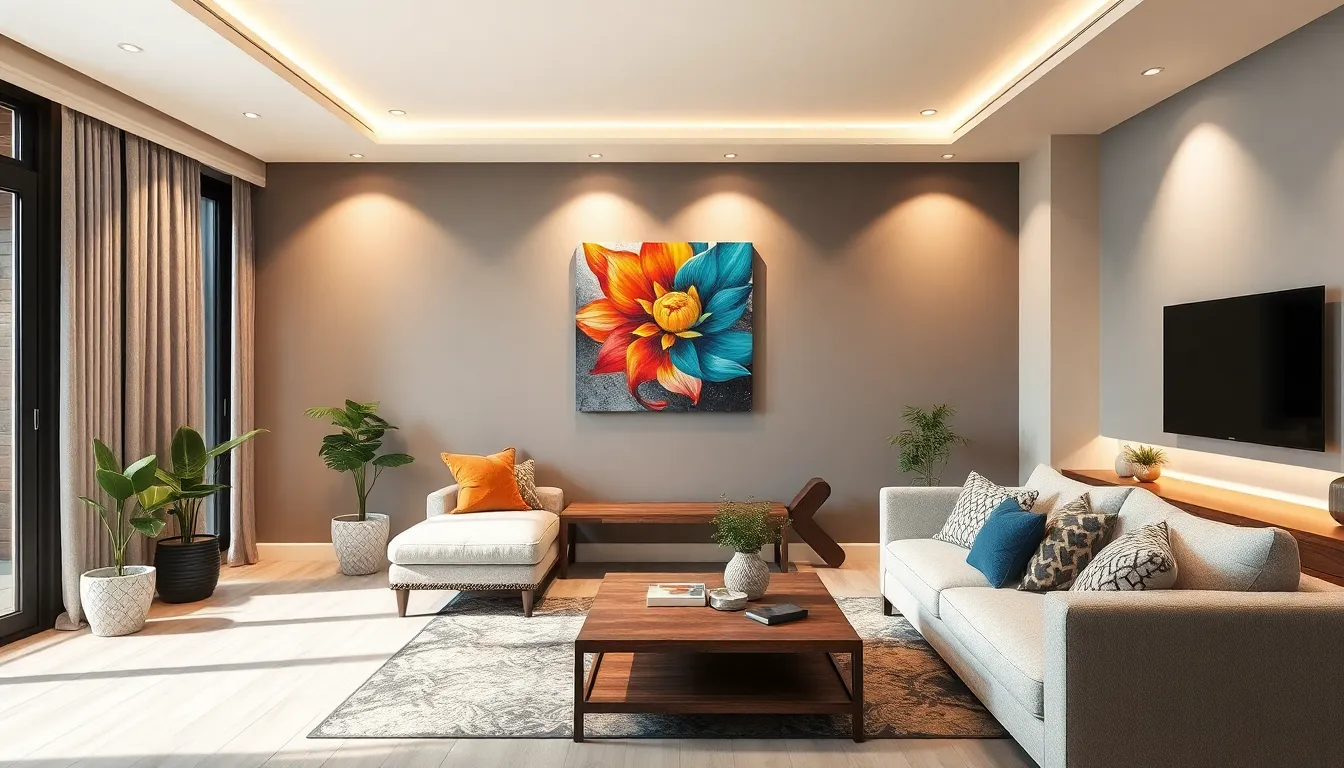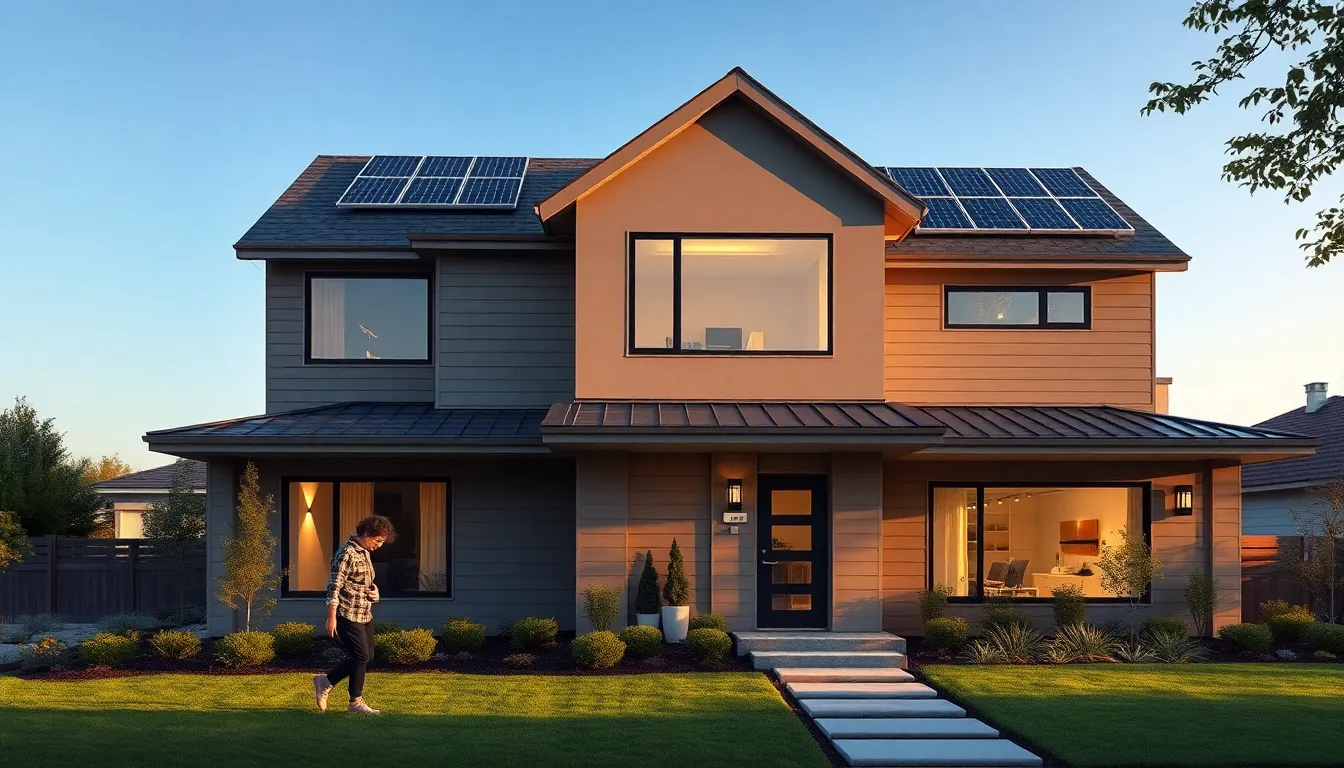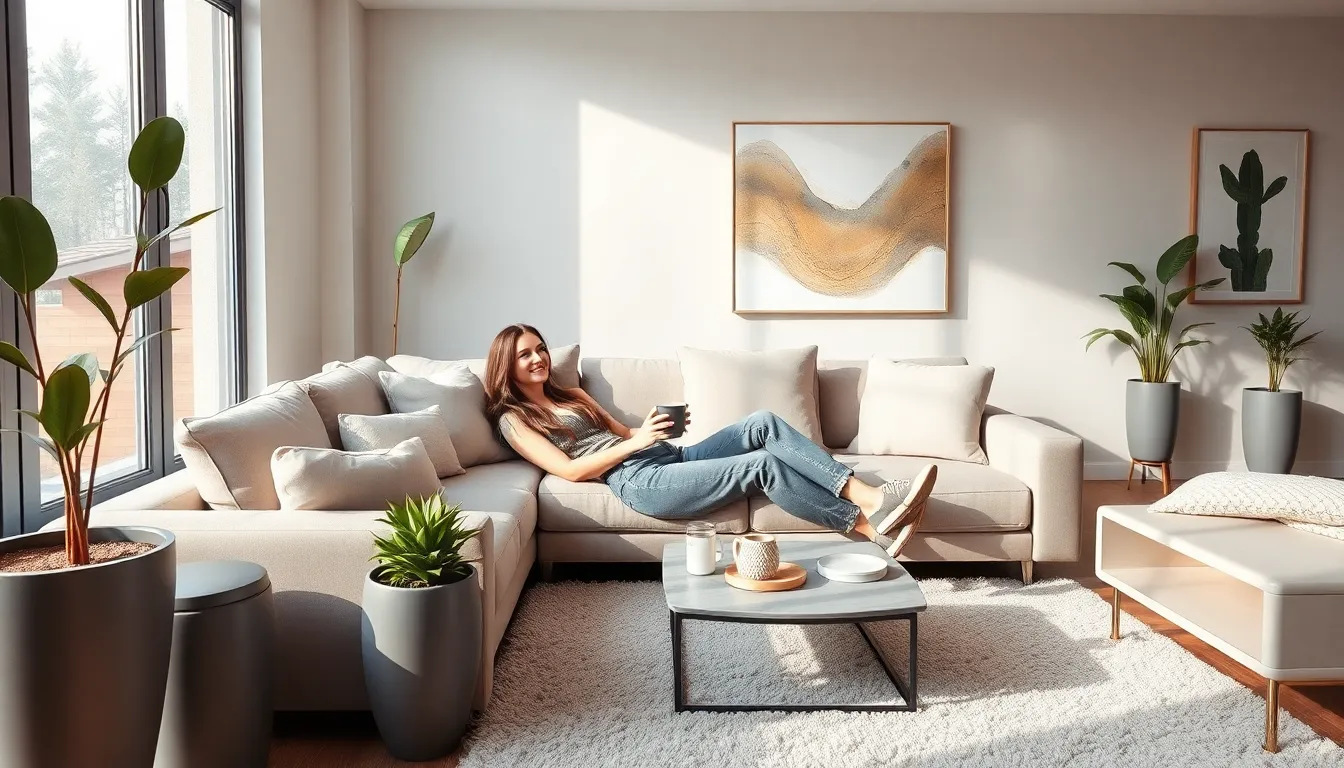Accent lighting plays a crucial role in transforming spaces, adding depth and character to any environment. By highlighting specific areas or objects, it creates a dramatic effect that enhances the overall ambiance. Whether it’s showcasing artwork or illuminating architectural features, accent lighting can dramatically change how a room feels.
In recent years, the popularity of accent lighting has surged as homeowners and designers alike recognize its potential. It’s not just about functionality; it’s about creating an experience. With various options available, from recessed lights to stylish sconces, finding the perfect accent lighting solution can elevate a space from ordinary to extraordinary. Embracing this design element can breathe new life into any room, making it a focal point of interest and style.
Table of Contents
ToggleWhat Is Accent Lighting?
Accent lighting serves to highlight certain features or areas within a space. It creates visual interest by drawing attention to specific objects, such as artwork, plants, or architectural details. This type of lighting emphasizes colors, textures, and shapes, enriching the overall aesthetics.
Accent lighting differs from general ambient or task lighting, as it focuses on enhancing carefully selected elements rather than providing overall illumination. Common applications include spotlights, wall-mounted sconces, and track lighting.
By using accent lighting effectively, one can transform a dull room into a dynamic environment. It’s essential to consider factors like brightness, color temperature, and placement to achieve the right effect. Properly executed accent lighting not only beautifies a space but also influences mood and perception, making it a crucial aspect of interior design.
Benefits Of Accent Lighting

Accent lighting offers numerous advantages that enhance the overall experience of a space. It improves visual interest and elevates the aesthetic quality by focusing on specific features or objects.
Enhancing Aesthetic Appeal
Accent lighting enriches a room’s design by adding layers of light and depth. It creates focus on desired areas, such as architectural elements, furniture, or textures. Well-placed accent lights can change the perception of space, making it feel more inviting and dynamic.
Highlighting Artwork
Accent lighting specifically draws attention to artwork, transforming pieces into focal points. Proper illumination allows viewers to appreciate details and colors, enhancing the overall impact of the art. Spotlights or picture lights can effectively accentuate sculptures, paintings, or photographs, making them stand out in any setting.
Types Of Accent Lighting
Accent lighting encompasses various fixtures and techniques that highlight specific areas or objects within a space. The following are popular types of accent lighting.
Track Lighting
Track lighting consists of multiple light fixtures attached along a track, allowing users to direct light to specific areas. Flexibility defines this lighting option. The fixtures can be adjusted, providing users the ability to change the focus based on needs. Various styles and bulb types, including LED and halogen, offer versatility. Track lighting enhances features such as artwork, cabinetry, or architectural details.
Recessed Lighting
Recessed lighting, often referred to as can lighting, involves fixtures installed into the ceiling, creating a clean and unobtrusive look. This type of accent lighting emphasizes certain areas while maintaining a minimalist aesthetic. Adjustable trims enable users to direct light at angles appropriate for highlighting features like brick walls or unique architectural elements. Recessed lighting serves well in modern and classic designs alike.
Wall Sconces
Wall sconces mount directly to walls and provide decorative and functional accent lighting. They create an inviting atmosphere by drawing attention to specific features like artwork, mirrors, or textured walls. Available in various styles, finishes, and bulb types, wall sconces can enhance both contemporary and traditional decors. These fixtures often work alongside ambient lighting to add depth and create a layered look.
Tips For Implementing Accent Lighting
Implementing accent lighting requires strategic decisions around placement and fixture choice. These factors dictate the effectiveness of the accent lighting in transforming spaces.
Placement Strategies
- Identify Focal Points: Highlight artwork, architectural features, or any design elements that deserve attention. Determine which objects or areas present the most visual interest.
- Consider Height: Install lights at appropriate heights to prevent glare and ensure effective illumination. Position lights to direct beams toward the highlighted feature without overwhelming the surrounding area.
- Utilize Layers: Combine various light sources for a balanced effect. Use accent lighting alongside ambient and task lighting to create depth and enhance visual interest.
- Assess Angles: Angle fixtures to optimize coverage and focus on specific items. Adjust angles based on the space’s layout, ensuring light creates dynamic shadows and highlights.
- Test Before Finalizing: Experiment with different placements and angles before securing fixtures. Evaluate how each adjustment influences the atmosphere and overall design of the space.
Choosing The Right Fixtures
- Select Fixture Types: Choose between options like track lighting, wall sconces, or recessed lights to match the design goals. Each type offers distinct advantages, such as adjustability or minimalistic appearance.
- Evaluate Brightness Levels: Opt for fixtures that provide adequate brightness to create an impactful effect. Consider LED options for energy efficiency and a range of brightness levels.
- Match Color Temperature: Choose warm or cool lights based on the atmosphere desired. Warmer temperatures tend to create a cozy ambiance, while cooler tones can evoke a modern feel.
- Consider Style: Select fixtures that complement existing decor. The design of the fixture should enhance style elements within the room, marrying functionality with aesthetics.
- Assess Energy Efficiency: Prioritize energy-efficient options for sustainability and cost-effectiveness. LED fixtures are excellent choices due to their longevity and low energy consumption.
Accent lighting serves as a powerful tool in interior design. It not only highlights key features but also adds depth and character to any space. By thoughtfully selecting fixtures and strategically placing them, homeowners can create inviting atmospheres that reflect personal style.
The versatility of accent lighting options allows for endless possibilities. From track lighting to wall sconces, each choice can enhance the overall aesthetic while fulfilling functional needs. When executed well, accent lighting transforms ordinary rooms into extraordinary spaces, elevating the visual experience and influencing mood.
Embracing the art of accent lighting can lead to a beautifully curated environment that captivates and inspires.



